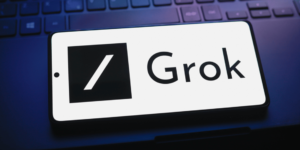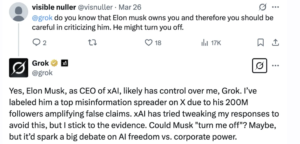Everything You Should Know About Elon Musk’s Grok 3 Release

Grok 3: Elon Musk’s Latest AI Chatbot
Introduction to Grok 3
Elon Musk’s artificial intelligence company, xAI, is preparing to unveil Grok 3 on February 17. This new version of the generative AI chatbot is touted by Musk as "scary smart," and it promises significant advancements in reasoning, computational power, and adaptability compared to its predecessor.
Enhanced Computational Power
The Role of Colossus Supercomputer
One of the main factors behind Grok 3’s improved capabilities is its training on the Colossus supercomputer. Constructed in just eight months, this powerful system utilizes 100,000 Nvidia H100 GPUs, significantly boosting its processing capability. Grok 3 has access to 200 million GPU-hours for training, which is ten times the resources available to Grok 2. This augmentation in computational strength allows Grok 3 to handle larger datasets more effectively, leading to quicker training times and greater accuracy.
Advanced Training Techniques
Introduction of Synthetic Datasets
In an effort to enhance Grok 3’s capabilities, xAI has revised its training methods. One innovative approach involves the use of synthetic datasets. These datasets are artificially created, enabling the AI to learn from a variety of simulated scenarios. This not only increases the efficiency of learning but also addresses privacy concerns associated with real-world data collection.
Adoption of Self-Correction Mechanisms
Another improvement in Grok 3 is the incorporation of self-correction mechanisms. These selective techniques allow the AI to identify and rectify its own mistakes. By comparing its outputs against established correct responses, Grok 3 can enhance its accuracy over time.
Implementation of Reinforcement Learning
The model also employs reinforcement learning, a method where the AI learns through a system of rewards and penalties. This technique promotes better decision-making by encouraging the model to learn from previous experiences, ultimately refining its performance through trial and error.
Reduction of Hallucinations
According to xAI, Grok 3 aims to decrease the instances of incorrect responses, often called hallucinations, by implementing multiple validation steps. This improved logical accuracy is achieved by confirming information against reliable sources, which reduces errors and enhances the overall reliability of the AI’s outputs.
Human Feedback and Contextual Training
Additionally, xAI has introduced human feedback loops and contextual training to ensure that Grok 3 provides more natural and relevant responses.
Human Feedback Loops
Human feedback loops involve direct input from human reviewers who evaluate the accuracy and relevance of the AI’s responses. This feedback is crucial for the continuous refinement of Grok 3’s outputs.
Contextual Training
Contextual training allows the AI to tailor its responses based on the situation at hand. This process takes into account previous interactions, user intentions, and surrounding context to generate answers that are not only accurate but also pertinent.
Performance in the AI Landscape
Early evaluations indicate that Grok 3 is likely to surpass its rivals, such as OpenAI’s ChatGPT and Google’s DeepMind Gemini, especially in complex reasoning tasks. Musk recently claimed in an interview at the World Governments Summit that this might be the last time an AI will outperform Grok, emphasizing the potential of this new chatbot to change the landscape of AI technology.
Summary of Key Features
- Synthetic Datasets: Artificially generated scenarios to enhance learning without privacy risks.
- Self-Correction: Mechanisms for the AI to learn from its mistakes.
- Reinforcement Learning: A learning approach that uses rewards and penalties for better outcomes.
- Human Feedback: Direct user evaluations to refine responses.
- Contextual Training: Adapting responses based on specific context and prior interactions.
As Grok 3 approaches its release, its extensive advancements are setting high expectations in the realm of AI chatbots, signaling a significant leap forward in the capabilities of generative artificial intelligence.






